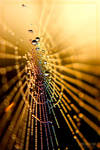ShopDreamUp AI ArtDreamUp
Deviation Actions
Photography!
We are no longer taking submissions but we hope this journal aides your learning!
"Photography is the art, science, and practice of creating durable images by recording light"
The first records of photography dates back centuries ago! Chinese philosopher Mo Di and Greek mathematicians Aristotle and Euclid described a pinhole camera in the 5th and 4th centuries BC. These became know as 'camera obscuras'. In the late 19th century there was a race in France to discover a way of permanently recording images. Joseph Niepce was the first to produce a lasting photographic image but Louis Daguerre invented the process that introduced photography to the masses.
:thumb54888615:


In this journal we are exploring some concepts of photography!
Digital photography has only been available to consumers since about 1996 and has quickly replaced film photography in terms of popularity.
But just because taking pictures has become much easier doesn't mean you can forget about important rules when it comes to photography!
Apature
Is how much light you are letting in through the lens. Typically, a fast shutter will require a larger aperture to ensure sufficient light exposure, and a slow shutter will require a smaller aperture to avoid excessive exposure.
Shutter Speed
This is how long the lens is taking in this light. Slower shutter speeds are often selected to suggest movement in a still photograph of a moving subject. Excessively fast shutter speeds can cause a moving subject to appear unnaturally frozen.
ISO Speed
Your camera's ISO setting controls how sensitive its sensor is to the light that reaches it. It is one of the crucial factors which goes into determining a photograph's exposure as well as the overall image quality.

These Tutorials go into much more detail!
Project Educate: Aperture, Shutter and ISO SpeedToday we'll take a quick basic look at Aperture, Shutter Speed and ISO Speed.
Aperture
The aperture determines the amount of light that is allowed into the digital sensor. A small number indicates a large aperture whereas a large number indicates a lower aperture. For example, an aperture of 8 would let in less light than an aperture of 4. Imagine your eye, specifically your pupil; the bigger the pupil is, the more light is being let in and the smaller it is, the less light. This is what is effectively happening with your camera. The aperture also determines the DOF (depth of field).
The numbers you usually see on the side of lenses look like this;
F 22 | 16 | 11 | 8 | 5.6 | 2.4
The larger the number, the less light is allowed in. Each number depicts double the amount of light allowed through the lens. For example, an aperture of 5.6 will allow twice the amount of light in than 8, but only half the amount of light than 2.4.:thumb2614198
reviews.cnet.co.uk/digital-slr…
These Tutorials Explain other concepts!


A couple of our Affiliates are Holding contests!
ProjectComment's Comment Contest!
~ All you have to do is constructively comment on a deviation and that's it, it is that simple!
Start: March 1st
End: March 31st, 10pm GMT
Open to all members!
Prizes include: A lot of Premium Memberships,
Link: 3wyl.deviantart.com/journal/Pr…
And
BeautyClub is holding a contest called Goodbye Winter! Check it out! Link: fav.me/d5wq49u
Prizes include: A tonne of
We are announcing winners very soon! Watch out for future journals
Member of the month#1
Our member of the month is xEmmyx545x (https://www.deviantart.com/xemmyx545x), she's a great person and i think what she does is great, check her work out.
:thumb409202909:
:thumb360818044:
:thumb409403079:
:thumb350939296:
:thumb349970983:
Thank you for reading
Also we have a contest, you can check it out here http://fav.me/d6v5xa1
Contest
The Dual Theme Contest!
What is the contest about?
The dual theme contest is a contest where you are given two themes, happiness and uncertainty, your job will be to find a unique and creative way of blending these two themes, to create one epic piece of art. You have to figure out a way to make happiness and uncertainty interact with each other.
How long is the contest?
The contest is 2 months long (Deadline February 28th).
How long will it take to announce the winners?
The time that it will take to announce the winners will depend on how many people participate in our contest, it might take anywhere from 2 weeks to a whole month.
Ar
A contest is coming!
As some of you know we're trying to get things running again, so we're currently working on a contest for our members.
We already decided what's it going to be about, but we still have a lot of things to do, such as organize the prizes, contact other groups for help and so on, so it's going to take awhile and we're also pretty busy so it's going to be a little bit challenging to find time to do work on the contest but don't worry, it's going to happen.
Hope every single one of you has a great day.
GOOD NEWS!
Good News!
We are picking things up again, and we are bring back some cool stuff
What cool stuff?
Don't get me started son :meow:
The Monthly Blog!
Where we choose a member to be our member of the month, the Member of the month can be chosen for practically anything. For the upcoming monthly blog, members can apply to be the member of the month by leaving a comment with a short message about why you deserve it and/or a few of your deviations here. By the way, we won't just pick the member of the month from the group that applied for it, we may pick somebody else.
On the monthly blog we also, wait for it, feature groups, so if you have a
Featured in Groups
© 2013 - 2024 Amatuer-Artists
Comments3
Join the community to add your comment. Already a deviant? Log In
Is this group eliminating photography all together, or are the submissions closed just for a while?

